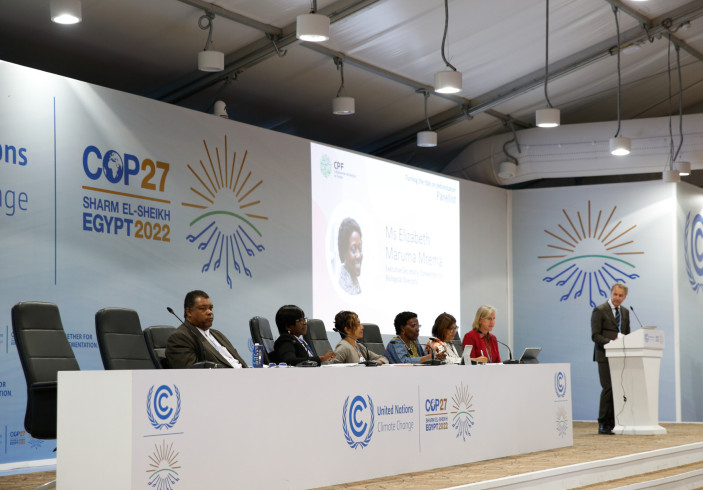|
|
||||
|
By Jo Nova In the annual tournament for cash handouts, the UN now enables charity for space-faring nations with slaves. Somehow, the demands for climate reparations were led by the nation burning more coal than the rest of the world combined, and no one laughed, or wondered whether they should mention it. … a group of 77 developing countries, led by China, called for $US1.3 trillion a year in new, additional, adequate and affordable finance to address mitigation, adaptation and loss and damage. –-Graham Lloyd, The Australian It’s almost as if the CCP invented the UN definition of “developing” as an industrial weapon.  ….OWID
Like most developing nations, two weeks ago China launched a manned spacecraft with propellants made from natural gas, and coal because it could not afford to use solar panels and windmills. For the moment, the world’s poor have to settle for using unsymmetrical dimethylhydrazine (UDMH) and nitrogen tetroxide (N2O4) to get their citizens in orbit. China’s space exploration plans include bringing back the first samples from Mars, and from the near-Earth asteroid Kamo’oalewa, and to look for ice in craters on the moon. What’s the point when we call a nation “developed” — when it wrecks its own electricity grid?  Photo by Colin Maynard By Jo Nova Imagine we were spending $200 million to inject pregnant women and vaccinate babies against RSV, and the real cause of many of the life threatening cases was just low vitamin D? RSV (Respiratory syncytial virus) is something nearly everyone catches by the time they are two years old. It’s like a bad cold. We’ll go on to catch it every few years for the rest of our lives, and it’s really only a problem for babies and the very old. In the last week by some odd coincidence, the BBC, ABC and CBC all have stories promoting the idea of saving babies with RSV vaccines which often cost $300 dollars each (USD). The government rollouts are being promoted with free advertising on news programs that pretend to be journalists. But not a single journalist asked the obvious question — if most babies recover just fine, what is different about the babies that struggle. Could it be that low vitamin D puts them at risk? Two studies suggest that babies with low vitamin D are, by golly, 5 to 10 times more likely to need intensive care.Back in 2011, Belderbos et al looked at 158 babies and measured the levels of vitamin D in their cord blood and found those with low levels went on to have six times the risk of a severe lung infection compared to babies with normal levels. (Low was <50 nmol/L (20 ng/ml) and normal was 75 nmol/L (30 ng/ml). It was a small study but other studies at the time already showed vitamin D played a major role in stopping the inflammatory responses getting out of control. By 2022, another study on 125 babies showed that the amount of virus each child had didn’t predict how severe their infection would be, but their vitamin D level when they arrived in hospital did. Those with the lowest vitamin D had a ghastly 11 fold increase in odds of suffering a life threatening illness. (Again low means <50nmol/L (20ng/ml)). If 20% of babies are deficient in Vitamin D, and the 11 fold risk is not just an artefact, that means about half of the babies suffering a life threatening disease are struck down because of their deficiency. Maybe this is a gross overestimate, but where are the studies? Why aren’t our Ministers for Health launching big programs to figure it out? Even if the risk is only 50% more, these are actual babies we’re talking about. And if we get the MAD misinformation laws, will anyone even be able to ask these questions?Critics might be damaging confidence in “public health”. Crazy people might think that if our Healthcare system was trying to save babies, rather than generate profits for Big Pharma (or Big Hospitals) the first thing they would do is study and fix the vitamin D deficiency. It’s not like this is an endangered animal or an exotic disease. It’s not a stretch to say every winter babies are dying because our health departments have little interest in vitamins or saving lives cheaply. To give some idea of how many people this affects — in Ireland during winter about a third of all babies would be classified as deficient. But in sunny-country Australia, it’s hard to even find published numbers. Despite the blazing sun here, about a quarter of adults still have a deficiency, so there’s probably plenty to go around in baby-world. Where is the cost benefit comparison?The long term side effects of injecting pregnant women with a new type of therapy are completely unknown. The side effects of higher Vitamin D levels though, correlate with lower rates of cancer, diabetes, high blood pressure, asthma, heart disease, dental caries, preeclampsia, autoimmune disease, depression, anxiety, and sleep disorders. Vitamin D influences over 200 genes — it is a chief meddler of molecules. Not only are deficient babies at risk of going down to RSV in a bad way, they’re at risk of autism spectrum disorder, behavioral disorders, schizophrenia, depression, and multiple sclerosis [Rogers et al]. As it happens, Vitamin D deficiency may cause as many as 40% of respiratory deaths in older people and one in six dementia cases. People deficient in Vitamin D are 14 times more likely to get severe forms of Covid. Vitamin D reduced intensive care by 80%. Despite all this low-hanging fruit littering the floor of hospitals, and vaporising dollars out of our medicare pot, Ministers apparently don’t want to know? In the UK, Ontario and Australia the vaccine is free (or will be by next winter) for pregnant women and people over 75, but you’ll have to pay to get vitamin D (which doesn’t cost much). But you’d think if we have “free $300 injections” we could have free bottles of vitamin D3 at every post office and school? In Australia, the government is paying $174 million for the vaccines, they call it “investing”. They argue that otherwise about 12,000 babies will be hospitalized each winter. But it only makes sense if we don’t “accidentally” make those babies healthier and keep them out of hospital in the first place doesn’t it? And since you are wondering, yes, there is a new mRNA vaccine for RSV (by Moderna). There are also a couple of protein based ones. Where’s the informed choice? Imagine if pregnant women were also given information on the risks of being low in Vitamin D? At the moment, we’re barely even studying those risks, possibly so Ministers can say “there’s no evidence there is a better alternative.” It’s like the last thing our health system wants is good data on cheap alternatives. REFERENCESBelderbos ME, Houben ML, Wilbrink B, Lentjes E, Bloemen EM, Jan L et al. Low vitamin D levels linked with RSV infection. Pediatrics 2011;127: e1513–20. – PubMed , Pediatrics, 2011 Jun;127(6):e1513-20. doi: 10.1542/peds.2010-3054. Ferolla et al. (2022) Serum Vitamin D Levels and Life-Threatening Respiratory Syncytial Virus Infection in Previously Healthy Infants,” The Journal of Infectious Diseases in 2022.
By Jo Nova Oh the Dilemma?More than 219 people have drowned and another 80 are still missing after the devastating floods in Valencia, Spain. The UN expert climate scientists say that shutting coal plants and building windmills is the best way to stop floods. Matt Ridley is wondering if removing 133 dams had anything to do with it, or if perhaps they should have built the big dam that was approved in 2001 but stopped by the Socialists in 2004: Dam shame: what really caused Valencia’s floods?Matt Ridley, The Spectator … Valencia had a similarly terrible flood in 1957, in which 81 people died, long before climate change became the go-to excuse for any bad weather. After that flood, to prevent a recurrence, the Spanish government built a string of dams in the hills to hold back water and diverted the Turia river away from the city. For more than six decades the system worked well. Why did it fail this year? Because the unusually warm sea made for an unusually bad storm, say some. Yet charts of rainfall in Spain show no trend towards a higher frequency of more extreme downpours… Indeed, 24 hour torrential rainfall records back to 1940 don’t sing the Climate Change song. Since 1982 human emissions of CO2 have grown from a cumulative total of 640 billion tons up to 1,800 billion tons and it hasn’t made the slightest difference to downpours. That’s a 280% increase in man-made CO2 and there’s nothing to show for it. Matt Ridley points to the enthusiastic dam removal programs the EU has been ordering: In the past few years, the Spanish government has been removing dams at a furious rate. Under a European Union programme to encourage the restoration of rivers to their wild state for the benefit of fish migration, Spain set about dismantling barriers of all kinds. In 2021 it got rid of 108 dams and weirs; in 2022, another 133. That year, according to Dam Removal Europe, a coalition of seven green pressure groups, it was Europe’s proud league champion at dismantling them… The billionaire’s ski club called the WEF brags about how many dams they have removed: The removal of dams in Europe is reviving rivers and boosting biodiversity The BBC was touting the environmental wonders of dam removal in Europe only 6 months ago: They not only cause biodiversity loss, impacting fish and microorganisms, but also prevent nutrients and sediments from flowing downstream, hindering fisheries and the livelihoods that depend on them. Research now shows that at least 1.2 million instream obstacles block river flows in 36 European countries, with about 68% less than 2m (6.6ft) in height. “Even barriers as small as 20cm (8in) may impact or delay the movement of some organisms,” says Carlos Garcia de Leaniz professor in Aquatic Biosciences at Swansea University and coordinator of Amber, a project that created the first atlas of European river barriers. Some dams are sacred though — no bureaucrat is going to get rid of a hydro-dam. They stop floods by reducing human CO2 emissions which may in a thousand years, slightly reduce world temperatures in such a way as to change jet-streams, and maybe possibly, lessen the intensity of downfalls. Screw the fish eh? Acknowledging that dams have a detrimental effect on ecosystems doesn’t mean denying hydropower’s benefits in supplying energy, however. “Absolutely nobody is proposing to blow up or remove barriers which are in use,” clarifies Garcia de Leaniz… But as Matt Ridley notes, the Cheste dam was “was specifically designed to prevent flooding, to ‘regulate the flows coming from the upper basin of the Poyo and Pozalet ravines’.” It was abandoned in 2004. “Could it have saved Valencia?” he wonders, pointing out that “the city of Aragon was saved last month by a dam built by the emperor Augustus.”
 Image by Julius H. By Jo Nova Like rats jumping on to a burning ship, the Australian Labor Govt picks the worst possible momentToday the Australian Senate will consider whether to put the Labor MAD Misinformation bill into law, which will give government bureaucrats at ACMA the right to use draconian fines on “digital communications platform” (blogs and Social Media) that publish opinions the high priest bureaucrats don’t like. And they are rushing it through so they can shut down or scare off critics before the next election. They only need to win over three more Senators out of six independent ones. They should all be aware of how corrupt and stupid this will look. See details below on which Senators to write to. Trump takes a warhammer to the censorship cartelThe censorship reached peak-absurdity when the left-wing-corporate-deep-state cartel shut down the US President’s Twitter account. The First Amendment was vaporized. Government officials had told Twitter and Facebook to censor political opinions they didn’t like. Since the FBI-CIA-State-Department have the money, the spies, the army and the assassins, the tech giants complied. The social media corporations also needed the government legal immunity of Section 230, which protects them from liability. Like a post office delivering poison letters — the Tech Giants couldn’t be blamed for what people posted. But Post Offices are supposed to deliver every letter, and the Tech Giants were allowed to read the mail and toss out what they didn’t like. Imagine if US Post decided just to lose Conservative letters, and not even tell them? That’s what shadowbanning is. And thus and verily, a horrible trillion-dollar-monster was welded together, and this response below, wow. What a blockbuster speech:
Thanks to @SpartaJustice for the transcript: ENDING THE CENSORSHIP CARTEL: If we don’t have Free Speech, then we just don’t have a Free Country. It’s as simple as that. If this most fundamental right is allowed to perish, then the rest of our rights and liberties will topple just like dominos one by one. They’ll go down. Trump will cut off the money flow to government agents to censor Americans. FIRST, within hours of my inauguration, I will sign an executive order banning any federal department or agency from colluding with any organization, business, or person, to censor, limit, categorize, or impede the lawful speech of American citizens. I will then ban federal money from being used to label domestic speech as “mis-” or “dis-information”. Then he will sack anyone involved in domestic censorship: And I will begin the process of identifying and firing every federal bureaucrat who has engaged in domestic censorship, directly or indirectly, whether they are the Department of Homeland Security, the Department of Health and Human Services, the FBI, the DOJ, no matter who they are. He will use the full force of the law: “Preserve those emails” SECOND, I will order the Department of Justice to investigate all parties involved in the new online censorship regime… These include possible violations of federal civil rights law, campaign finance laws, federal election law, securities law, and anti-trust laws, the Hatch Act and a host of other potential criminal, civil, regulatory, and constitutional offenses. He will cut off legal protection for any platform that curtails legal speech: From now on, digital platforms should only qualify for immunity protection under Section 230 if they meet high standards of neutrality, transparency, fairness, and non-discrimination. Then he’s going after universities that drive the censorship labels — they will lose funding for research and students for five years or more! FOURTH, we need to break up the entire toxic censorship industry that has arisen under the false guise of tackling so-called “mis-” and “dis-information.” The federal government should immediately stop funding all non-profits and academic programs that support this authoritarian project. If any U.S. university is discovered to have engaged in censorship activities or election interferences in the past, such as flagging social media content for removal and blacklisting, those universities should lose federal research dollars and federal student loan support for a period of five years, and maybe more. There will be criminal penalties for any federal bureaucrat found to interfere with elections by depriving Americans of information: We should also enact new laws laying out clear criminal penalties for federal bureaucrats who partner with private entities to do an end-run around the Constitution and deprive Americans of their First, Fourth, and Fifth Amendment rights. In other words, deprive them of their vote. And once you lose those elections and once you lose your borders like we have, you no longer have a country. He will stop government employees from profiting by quitting their job and moving to a Big Tech platform: Furthermore, to confront the problems of major platforms being infiltrated by legions of former Deep Staters and intelligence officials, there should be a 7-year cooling-off period before any employee of the FBI, CIA, NSA, DNI, DHS, or DOD is allowed to take a job at a company possessing vast quantities of U.S. user data. He’s calling for a digital bill of rights, where people have a right to be treated equally online: FIFTH, the time has finally come for Congress to pass a digital Bill of Rights. This should include a right to digital due process, in other words, government officials should need a COURT ORDER to take down online content, not send information requests such as the FBI was sending to Twitter. Furthermore, when users of big online platforms have their content or accounts removed, throttled, shadow-banned, or otherwise restricted no matter what name they use, they should have the right to be informed that it’s happening, the right to a specific explanation of the reason why, and the right to a timely appeal. In addition, all users over the age of 18 should have the right to opt-out of content moderation and curation entirely, and receive an unmanipulated stream of information if they so choose. Our quality of life depends upon it: The fight for Free Speech is a matter of victory or death for America and for the survival of Western Civilization itself. When I am President, this whole rotten system of censorship and information control will be ripped out of the system at large. There won’t be anything left. By restoring free speech, we will begin to reclaim our democracy, and save our nation. For Australians, the Senators who may stop our Misinformation bill today are: Senator David Pocock, Jacquie Lambie, Tammy Tyrrell, Fatima Payman, David Van, and Gerald Rennick*. [email protected] | [email protected] | [email protected] | [email protected] | [email protected] | [email protected] | But write to all your key elected representatives — let the Labor party know their deceptive methods are obvious, the legislation is a bomb that our largest most powerful allies will detest. It will be unwound. They need to know, so they don’t sell their souls to win the last three Senators over. *Rennick is obviously a Saint who already opposes this bill and needs our help. Hat tip to David of Cooyal. Thank you to those who served.
By Jo Nova It could be the lamest COP meeting yetEvery year thousands of bureaucrats meet in an exotic location for a UN conference to agree not to solve “global warming”. Next week will be the 29th failure. It is the Olympics of Big Government rorts. This is not just a few hundred climate scientists catching up for a weekend, there are forty or fifty thousand grifters meeting, not just for a few days but for two money-sucking weeks. After they’ve used the tax dollars to get there, they sit around and discuss how they will divvy up the loot, the other tax dollars, called “climate finance”, as if the atmosphere wants a loan.
As it happens, Joe Biden and Emmanual Macron are not going either. It just doesn’t have the social cachet these days in the wake of the US election. This next little story is so emblematic of the corruptocrat blob. A senior member of Azerbaijan’s COP29 team has been caught red handed using the “climate” conference to line up investors in Azerbaijan’s oil and gas fields. The sad truth is, that in terms of the world’s poor, this was probably the most productive event at the conference. In a secret recording a fake Hong Kong investor said he wanted to sponsor the conference but in return needed to discuss “investment opportunities” in local gas fields — ain’t that just the way the whole climate cartel rolls? Everybody pretending to look after the planet, but really looking out for themselves. COP29 chief exec filmed promoting fossil fuel dealsA secret recording shows the chief executive of Azerbaijan’s COP29 team, Elnur Soltanov, discussing “investment opportunities” in the state oil and gas company with a man posing as a potential investor. “We have a lot of gas fields that are to be developed,” he says. The BBC has been shown documents and secret video recordings made by the human rights organisation, Global Witness. However, this is the second year in a row the BBC has revealed alleged wrongdoing by the host government. Where was the BBC for the other 27 conferences? — covering up the crime. The horse-trading starts Monday. But In a shock, Papua New Guinea has pulled out, calling the event a total waste of time. “The last three Cop meetings have gone around in circles, producing no tangible results for small island states. Cop29 will be no different, so Papua New Guinea will not participate at the political level,” Tckatchenko said. Good for you PNG. By Jo Nova Spare a moment to celebrate the outstanding bravery of Elon Musk, and how much he risked to play a key role in this historic election. It was all or nothing…
The Australian Government wants to stop people talking on X and on this blogThe same day America votes to be the Land of the Free — Australia is passing laws to fine and imprison people from saying something the government disagrees with. Soon we will not be allowed to point out side effects and risks of “public health” measures, nor say anything that damages faith in our bankers. 100% of vaccines are 100% good and central banks are not insolvent! The deceptive Australian Labor Party snuck through the Combatting Misinformation and Disinformation Bill 2024 (MAD Bill) under the pandemonium of the US Election day news. Perhaps they were just embarrassed their billion dollar ABC news is such an abject failure at stamping out *misinformation* because no one watches it anymore. Or maybe they hid the Misinformation Bill because they knew Australians would not like being treated like babies who can’t figure out the truth for themselves. The Albanese government went out of its way to introduce a special standing order to get around the normal parliamentary process. It will be in the Senate on Monday next week! If citizens say something the government deems to be misinformation, huge fines will apply to social media, blogs and forums. Instead of having the implicit right to criticize the government we will need to “prove” our comments were scientific, religious or satirical in a court of law. How many lawyers do you have? Ultimately, only the rich will be allowed to speak, and forums like X — the citizens news service, will have to guess what is considered misinformation this week. For more details on this see Tony Nikolic’s post at Maryanne Demasi’s blog. He quotes John F Kennedy and Franklin D Roosevelt: When the government becomes the sole arbiter of truth, it opens the door to corruption and tyranny. When citizens are too afraid to speak out, the government with its cheerleading bureaucracy and corporate sector can operate without accountability, leading to an erosion of trust in institutions. SIGN the PETITION TO OPPOSE THE BILL It is no coincidence the cowardly Australian Labor Party is also writing up legislation to pretend to save children under 16 from bullying on social media by banning them completely. It is, of course, just an excuse to force X, and Facebook et al to require ID checks on every single user — how else will they prove the users are over 16? The Labor Party don’t want anonymous critics or whistleblowers. The protests have just begun. This is brilliant! @JAGtalks via Craig Kelly
Comment of the day :
h/t to David Maddison, Panda, The IPA — the Institute of Public Affairs.
… By Jo Nova A historic victory — The greatest political comeback in the USA Talking about Elon — Trump raved and said “We have to protect our super geniuses”. This is so incredibly rare — the recognition at the highest level that scientific and engineering genius needs to be protected. I’m still the cynic looking for the gotcha — but he has also won the popular vote (51.1%), seemingly every swing state (so far*) and taken back the Senate. This is excellent. How can the Blob cheat their way out of this? Could they have planted “fake votes” for Trump to pretend he cheated and dispute the results, could they claim he is an insurrectionist on January 6th to disqualify him, after all his supposed “crimes” were laundered before the voters and the voters still voted for him. Imagine how many votes he would have won if the media hadn’t worked against him every minute. In Australia, our entire national renewable energy policy just turned into an albatross. But the dark malevolent power of the ACMA Misinformation Bill was on the agenda in the Australian Parliament today. This legislation threatens the existence of this blog, social media, and all the independent voices that are not already under government control. With the Anglosphere under the protection of the USA in a hostile world, all it would take is a word from Trump about the need for their closest allies to protect free speech. _______ *According to Politico – only 54% of votes have been counted in Arizona (is this the 21st Century, and what use are electronic machines?). Trump 50.9%, Harris 48.3%. In Nevada, Trump is up 51.5% to Harris 46.8% with 83% counted. In Pennsylvania — 96% counted, with Trump at 50.8% to Harris 48.2%. Florida used to be a swing state, but now it is 56% for Trump. California, on the other hand, went 58% to Harris. h/t David Maddison about the ACMA bill. The Labor Party were hoping we wouldn’t notice.
By Jo Nova All the world waits
If Trump Is Elected It Will Be The End Of Bureaucracy As We Know ItOther Democrats agreed that another Trump presidency would likely spell doom for lucrative but wasteful government programs, with increased efficiency and reduced tax revenue taken in by the government would have a devastating effect on their ability to become wealthy. “Our system of government has never faced a more imminent threat,” said Congresswoman Nancy Pelosi. “The days of elected officials getting rich from kickbacks, secret bribes, and insider trading may be over. Serving the public should never be the motivating factor for entering public service. I fear for our nation… and my life.” The gap between the media and the voters continues to grow:Or, to put it another way, the media had to be nicer to Kamala than to any candidate in historyNewsbusters reports that this is the largest media bias they have ever seen. So despite the relentless propaganda, at least half the country think the media are barking mad, or they wouldn’t be doing the exact opposite of what the media wants them to do. Call me suspicious, but I can’t see the sociopaths with power giving it up easily. Given Mike Benz withering description of 76 years of election rigging influence by US Intelligence agencies, it’s hard to believe they (and all the other beneficiaries) won’t be doing their damnedest to win one way or the other. After all their jobs may depend on it, and they’ve tried impeachment, indictments, assassinations, bankrupting him with legal cases, they’ve put his key supporters in jail, and they’ve disbarred the lawyers who tried to help him last time. What’s one more unthinkable steal? It’s just people protecting democracy, right?
Activist groups have been created to defend the Blob“The 65 Project” is a kind of legal Deathstar, threatening the lawyers who helped Donald Trump in 2020. They want to “deter future abuse of the legal system by “Big Lie Lawyers” (they actually call them that) seeking to overturn legitimate elections.” Legitimate, meaning, their favourite candidate. Once upon a time, the opposition lawyers were just doing their job, but now they are are horrible unethical people who “risk democracy”presumably by bringing cases before the court that a judge might accidentally agree with. It’s so much more ethical to abandon the unwashed masses and deny them their day in court isn’t it? It goes without saying that they must be afraid his lawyers might win. Anyone want to help archive election results?On the other side, there is a citizens ECop group looking for help to archive election results in 15 minute intervals so audits can be done later. I don’t know much about them, but it looks good. They aim to have a type of Election Results WayBack Machine. This would shine a light on any step-wise “jumps” in the vote tally. For any US voters reading, don’t forget to vote if you still can. The more votes there are, the harder it is to sabotage. And while you wait, Joe Rogan talks to the most amazing engineer… As Musk says, this may be the last election if Trump doesn’t win. With mass immigration of welfare-dependent-left-leaning voters into swing states, the swing states become solid Democrat states. Soon the whole US is one big California. More ominously, if the forces of censorship, data collection and social credit scores are not beaten back, soon the whole West will be one big China. UPDATE: Elon seems very happy…
By Jo Nova In the spirit of this strange moment, as Mark Steyn says: But in Botswana everyone voted on Wednesday, the last up-country results came in on Thursday, the ruling party conceded and the new guy was sworn in on Friday. That’s a normal election in a normal country. Meanwhile, back in the greatest country in the history of countries, in twenty-four hours we shall be embarking on the usual folderol offour-hour lines to vote, malfunctioning machines, burst water pipes, court injunctions to keep polls open or close them down (according to taste), pausing the count before it’s completed, and the GDP-boosting quadrennial spike in plywood sales as storekeepers in DC and elsewhere board up their windows.
Meanwhile, nobody does advertising better than Americans — the pageantry, power, persuasion and fun:
|
||||
|
Copyright © 2025 JoNova - All Rights Reserved |
||||






















Recent Comments